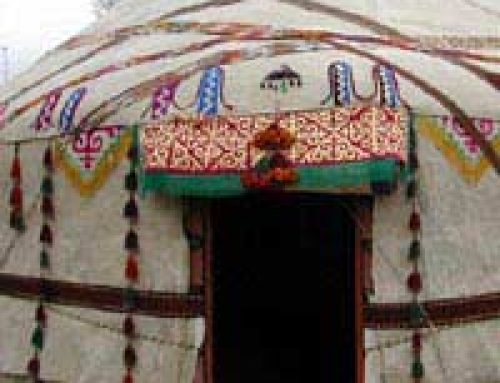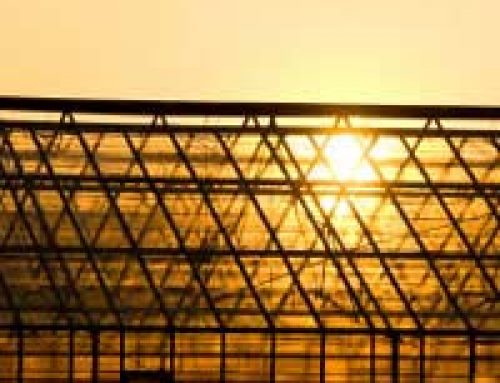
Although a house of straw may not be part of your vision for the future, the concept is gaining ground among those in the natural/sustainable building movement.
Manufacture and transport of construction materials is responsible for up to half of all greenhouse gas emissions. In addition, western-style dwellings consume up to 30 percent of the world’s energy. Proponents of straw bale construction believe that using this natural material is the answer.
The Virtues of Straw Bale Building
Straw bale construction uses straw bales for walls. When you build using straw bale, there is no need for fired bricks or cement, both significant environmental offenders. Straw essentially provides its own insulation, eliminating the need for artificial insulation materials.
Bales are about 450mm thick and surpass building regulations for insulation by two or three times. Energy usage is lower, further reducing CO2 emissions.
Straw bales are biodegradable, so any waste product can be thrown onto the compost heap! When used in building, if kept dry they remain intact, almost ‘mummified’ for decades and perhaps even centuries. Another bonus is that they are cheap and can be found locally. Straw bale construction is quick, can be accomplished by non-experts and produces unique and attractive dwellings.
Straw Bale Maintenance
The primary enemy of straw bale construction is dampness. To provide protection from the elements, straw bale walls should be rendered (or plastered) with lime. A mixture of gravel, sand, water and quicklime form a render that you use to coat the walls inside and out. Clay render is also used in straw bale construction, but requires waterproofing if used on exterior walls.
You can further minimise the possibility of moisture damage by building your foundation about six to eight inches above ground level. It also helps to increase the overhang of your roof.
Some may wonder if fire is a problem. However, straw bales are bound so tightly that there is not enough oxygen to support combustion. They have no greater fire risk than timber walls.
Another common concern is whether straw bales provide an attractive accommodation for vermin. However, straw is not a food source and provides no special incentive to rats or mice. As long as the bales are properly rendered, vermin will not be an issue.
Straw bale construction is surprisingly durable. Some U.S. straw bale dwellings are still standing after more than 100 years. Proponents claim that with proper construction and maintenance, there’s no reason to expect any less, even with the UK’s damper climate.
Straw bale building was first seen in the Midwest United States during the 1800s. Farmers used available waste material from their crops to build what they intended to be temporary structures. However, they found them quite liveable and in some ways superior to traditionally built homes.
Planning Regulations
If you think you would like to build using straw bale, begin by consulting your local planning authority. Planning permission may not be required if you’re using natural building methods for a garden shed. But if you plan to live in your green building, it will need to conform to building regulations.
Before you attempt to build using straw bale, read as much as you can. There are also several courses available that teach straw bale construction. Look for opportunities to help out on someone else’s construction project. It is possible to self-build, but better to invite friends and make it an event. You can also hire professional help to handle parts of the construction or manage the whole project.
You might be surprised to learn that straw bale construction may not be significantly cheaper than conventional methods. Although building materials (i.e., the straw bales) are less expensive, pretty much everything else that goes into the dwelling remains the same.
The best way to lower building costs is to recycle other materials like windows and doors. Using friends and family for labour will also save money. Much greater savings come after you move in. The superior insulation of straw bales can reduce annual heating bills to well below £100.
A decision to build using straw bale remains firmly outside the mainstream today. This type of natural construction hasn’t yet caught on with business or industry, simply because of the low potential for profit. However, if you are the adventurous type and are keen to do your bit for the environment, you will find a lively community of green builders ready to help out.





Great text on straw bale construction. Is there a way of streamlining construction, so one may be able to build say 130 units more efficiently? I am an architect looking at building 130 straw bale holiday lodges in the UK.
Do you know anyone in Devon area UK who would like to build a showcase straw bale garden hut for working and housing guests? Looking at pentagon, 12′ x 12′ with loo and wood burner. To reduce labour costs I can provide accommodation and food during planning/ construction, two years’ showcasing and the possibility of being a sw agent for builders. Anyone want to talk about this? Thanks, look forward to hearing from you, Sarah
@skinbard. We can put this on our facebook page if you’d like? Let us know by commenting here.
I am currently re-doing my driveway. Instead of using concrete blocks I was wondering about the opportunity of using straw as my wall. Any information would be greatly received !!